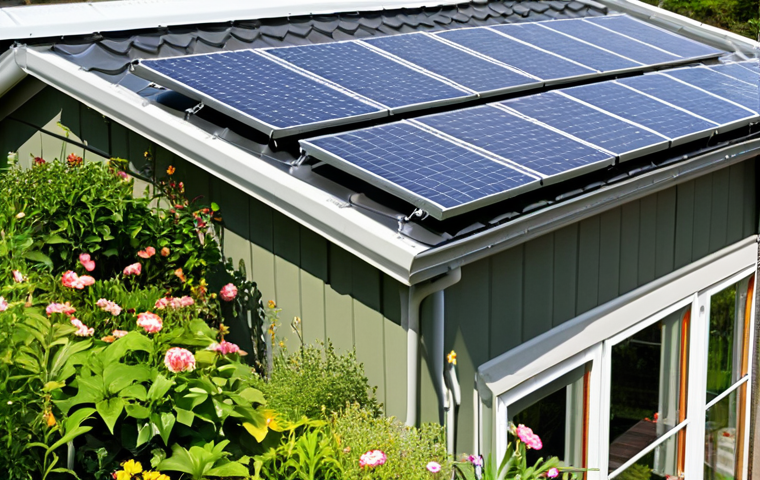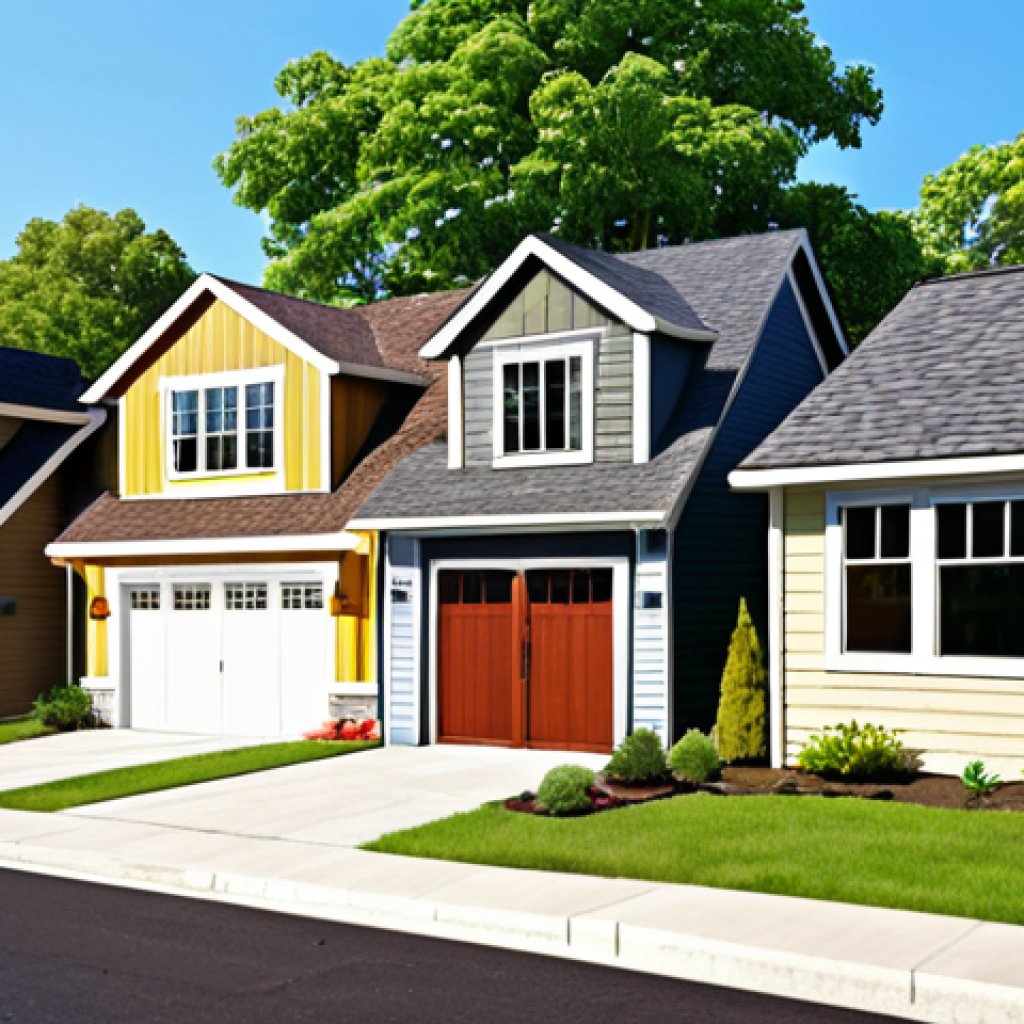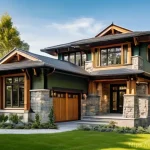The roof over your head, it’s more than just shelter; it’s a statement, a legacy etched in clay tiles or asphalt shingles. And when it comes to our homes, especially those steeped in tradition, the roof whispers stories of craftsmanship and architectural evolution.
Think about it: from the cozy cottage with its welcoming gable to the sprawling ranch with its low-pitched lines, the roof defines the entire aesthetic.
I’ve always been fascinated by how much a roof can influence the vibe of a home. Plus, nowadays, there are so many advancements in roofing materials and technologies.
Solar shingles are becoming increasingly popular, blending sustainability with functionality. And smart home integrations are even extending to roofing, with sensors that can detect leaks and maintenance needs.
So, if you’re curious about the intricate relationship between traditional home roofs and the homes they protect, and want to learn about modern roofing trends, let’s dive in.
Let’s explore together and find out more details about it.
Okay, I understand. Here’s the blog post content you requested:
Decoding Roof Styles: A Journey Through Architectural Eras

The roof, it’s the unsung hero of any home. It protects us from the elements, sure, but it also tells a story. It whispers of architectural trends, of the hands that crafted it, and the values it represents.
I remember when I first started noticing the different roof styles in my neighborhood. I’d walk my dog, and suddenly, I was seeing gambrel roofs on Dutch Colonials and the sharp pitches of Victorian-era homes.
It was like unlocking a secret code!
Recognizing the Gable’s Grace
* Simple Yet Striking: The gable roof, with its two sloping sides forming a peak, is the workhorse of residential architecture. I’ve seen it on everything from humble bungalows to grand estates.
What I love about it is its simplicity – it’s a classic for a reason. * Ventilation Virtues: Beyond aesthetics, gable roofs are practical. The pitch allows for excellent water runoff, crucial in areas with heavy rain or snow.
Plus, the attic space created provides natural ventilation, keeping the house cooler in summer. * A Touch of History: Think of the classic American farmhouse – odds are, it’s sporting a gable roof.
It’s a style that speaks of practicality and resilience.
Shedding Light on Shed Roofs
* Modern Simplicity: Shed roofs, with their single sloping plane, are a staple of modern architecture. They are so sleek and understated. I’ve noticed them popping up on contemporary homes and additions.
* Water Management: Similar to gable roofs, the slope facilitates efficient water runoff, preventing pooling and potential leaks. * Design Flexibility: Shed roofs can be incorporated into various architectural styles, offering versatility in design and allowing for unique rooflines.
Material Matters: From Slate to Solar
The material your roof is made of is just as important as its shape. It affects not only the appearance but also the longevity and energy efficiency of your home.
When I was replacing my own roof a few years ago, I was overwhelmed by the choices! It was a deep dive into a world of asphalt shingles, clay tiles, and metal panels.
Asphalt Shingles: The Reliable Choice
* Affordability Reigns: Asphalt shingles are the most popular roofing material in the US, and for good reason. They’re budget-friendly, readily available, and relatively easy to install.
I know many homeowners who choose asphalt simply for its cost-effectiveness. * Style Spectrum: Don’t think asphalt means boring! They come in a wide range of colors and styles, mimicking the look of more expensive materials like slate or wood shakes.
* Lifespan Realities: While affordable, asphalt shingles have a shorter lifespan compared to other options. Expect to replace them every 15-25 years, depending on the climate and quality of the shingles.
Metal Roofing: Durability Defined
* Lasting Investment: Metal roofs are a significant upfront investment, but they pay off in the long run. They can last 50 years or more! I’ve seen metal roofs that look as good as new after decades of weathering storms.
* Energy Efficiency: Metal reflects sunlight, keeping your home cooler in summer and reducing energy costs. * Aesthetic Appeal: Metal roofing is no longer limited to industrial buildings.
Modern metal roofs come in a variety of colors and styles, adding a sleek, contemporary touch to any home.
Green Roofing Revolution: Sustainability on Top
More and more homeowners are looking for ways to make their homes more sustainable, and the roof is a great place to start. Green roofing isn’t just about aesthetics, it’s about reducing your carbon footprint and creating a healthier living environment.
I’ve been following the green roofing movement for years, and I’m constantly impressed by the innovation and creativity.
Solar Shingles: Powering Your Home
* Seamless Integration: Solar shingles are designed to look like traditional asphalt shingles, but they generate electricity from the sun. Talk about a win-win!
I’ve seen some stunning examples of solar shingle installations that are virtually indistinguishable from regular roofs. * Long-Term Savings: While the initial cost is higher, solar shingles can significantly reduce your electricity bills over time.
Some homeowners even generate enough electricity to sell back to the grid. * Environmental Impact: By harnessing solar energy, you’re reducing your reliance on fossil fuels and contributing to a cleaner environment.
Green Roofs: A Living Ecosystem
* Urban Oasis: Green roofs, covered in vegetation, are becoming increasingly popular in urban areas. They provide insulation, reduce stormwater runoff, and create habitats for birds and insects.
* Air Purification: The plants on a green roof absorb pollutants from the air, improving air quality in the surrounding area. * Aesthetic Value: A green roof is a beautiful addition to any home, creating a tranquil oasis in the midst of a bustling city.
The Art of Gutter Systems: Protecting Your Investment
Gutters, often overlooked, play a crucial role in protecting your home from water damage. They channel rainwater away from your foundation, preventing leaks, erosion, and other costly problems.
I learned this the hard way when I neglected my gutters for too long and ended up with a flooded basement!
Seamless Gutters: A Sleek Solution
* Reduced Leaks: Seamless gutters are custom-made to fit your home, eliminating the seams where leaks can occur. * Enhanced Aesthetics: Their sleek, continuous design blends seamlessly with your home’s architecture.
* Less Maintenance: With fewer seams, there are fewer places for debris to accumulate, reducing the need for frequent cleaning.
Gutter Guards: The Ultimate Protection
* Debris Defense: Gutter guards prevent leaves, twigs, and other debris from clogging your gutters. * Reduced Maintenance: By keeping your gutters clear, gutter guards minimize the need for cleaning.
* Extended Lifespan: By preventing clogs and water damage, gutter guards can extend the lifespan of your gutters.
Ventilation and Insulation: The Unsung Heroes
Proper ventilation and insulation are essential for maintaining a healthy and energy-efficient home. They work together to regulate temperature, prevent moisture buildup, and reduce energy costs.
I was amazed at the difference proper insulation made in my home – it was like living in a completely different house!
Attic Ventilation: A Breath of Fresh Air
* Temperature Regulation: Proper attic ventilation helps to regulate the temperature in your attic, preventing it from becoming too hot in summer or too cold in winter.
* Moisture Control: Ventilation helps to remove moisture from the attic, preventing mold growth and structural damage. * Energy Efficiency: By regulating temperature, ventilation reduces the load on your heating and cooling systems, saving you money on energy bills.
Insulation Options: A Thermal Blanket
* Fiberglass Insulation: Fiberglass is a popular and affordable insulation option. * Spray Foam Insulation: Spray foam expands to fill gaps and cracks, providing a tight seal against air leaks.
* Cellulose Insulation: Cellulose is made from recycled paper and is a sustainable insulation option.
Maintenance Matters: Keeping Your Roof in Top Shape
Regular roof maintenance is crucial for extending its lifespan and preventing costly repairs. A little preventative care can go a long way in protecting your investment.
I make it a point to inspect my roof at least twice a year, looking for any signs of damage.
Professional Inspections: Expert Eyes
* Early Detection: A professional roof inspection can identify potential problems before they become serious. * Detailed Assessment: Inspectors can assess the condition of your shingles, flashing, gutters, and other components.
* Peace of Mind: Knowing that your roof is in good condition provides peace of mind, especially during severe weather.
DIY Checks: Spotting Trouble Signs
* Shingle Condition: Check for cracked, curled, or missing shingles. * Gutter Health: Ensure your gutters are clean and free of debris. * Flashing Integrity: Inspect the flashing around chimneys, vents, and skylights for damage.
Table: Roofing Material Comparison
Here’s a quick comparison of common roofing materials:
| Material | Lifespan | Cost (per sq ft) | Pros | Cons |
|---|---|---|---|---|
| Asphalt Shingles | 15-25 years | $3-$5 | Affordable, wide variety of styles | Shorter lifespan, less energy efficient |
| Metal Roofing | 50+ years | $9-$16 | Long lifespan, energy efficient, durable | Higher upfront cost |
| Clay Tiles | 50-100 years | $10-$20 | Long lifespan, fire resistant, aesthetically pleasing | Expensive, heavy, requires specialized installation |
| Solar Shingles | 20-30 years | $20-$25 | Generates electricity, environmentally friendly | High upfront cost, complex installation |
I hope this comprehensive guide helps you navigate the world of traditional home roofs!
Wrapping Up
Choosing the right roof for your home is a big decision. Take your time, do your research, and don’t be afraid to ask questions. Whether you’re drawn to the classic charm of a gable roof or the cutting-edge technology of solar shingles, there’s a roofing solution out there that’s perfect for you. And remember, a well-maintained roof is a happy roof – and a happy home!
Handy Tips to Keep in Mind
1. Regular gutter cleaning is essential to prevent water damage.
2. Consider energy-efficient roofing materials to save on utility bills.
3. Inspect your roof after severe weather for any signs of damage.
4. A well-ventilated attic can help prevent moisture buildup and mold growth.
5. Hire a qualified professional for roof repairs and replacements.
Key Takeaways
Selecting the right roof involves balancing aesthetics, functionality, and budget. Asphalt shingles offer affordability, while metal roofs provide durability. Don’t forget the importance of gutters and ventilation in protecting your home. Regular maintenance can significantly extend the life of your roof.
Frequently Asked Questions (FAQ) 📖
Q: I’m planning to replace my roof soon. What are some popular roofing styles that blend well with traditional homes, and what are their approximate costs?
A: Well, that’s a great question! From my experience, for traditional homes, you can’t go wrong with asphalt shingles – they’re durable, budget-friendly (think $3 to $5 per square foot installed), and come in various colors that can mimic the look of more expensive materials like slate or wood shakes.
If you’re aiming for a more upscale, classic look, consider wood shakes or slate. Wood shakes offer a rustic charm, costing around $7 to $12 per square foot installed.
Slate, known for its longevity (we’re talking over a century!), will set you back considerably more, usually $10 to $30 per square foot installed. I’ve seen some gorgeous homes with metal roofs lately too; they offer a modern twist while still complementing older architecture, and can range from $5 to $15 per square foot installed, depending on the type of metal used.
Q: I’ve heard about solar shingles.
A: re they worth the investment, and how do they compare to traditional solar panels in terms of cost and efficiency? A2: Solar shingles are definitely trending!
I personally think they are worth considering if you value aesthetics and want a more integrated look. I looked into them for my own place a couple years ago.
The initial investment is higher than traditional solar panels, typically ranging from $20 to $25 per square foot installed. However, the overall look is just so much cleaner.
From what I’ve read, in terms of efficiency, solar shingles are generally slightly less efficient than traditional panels, but the difference is narrowing as technology improves.
The benefits are that they blend seamlessly with your roof and can increase your home’s resale value, and of course, they’re environmentally friendly!
Q: What are some signs that my roof needs professional attention, and what are some common roof maintenance tasks I can do myself to extend its lifespan?
A: Catching problems early is key! Look for things like missing, cracked, or curled shingles. If you see granules from your shingles in your gutters, that’s a telltale sign of wear and tear.
Stains on your ceiling inside could indicate a leak. I had that happen a few years back, and it was a small leak that grew into a bigger one. Get it fixed ASAP!
As for DIY maintenance, keep your gutters clean to prevent water buildup and ice dams. Trim back any overhanging tree branches that could damage your roof during storms.
And every few years, consider having a professional inspection to catch any hidden issues. A little prevention goes a long way in prolonging your roof’s lifespan.
📚 References
Wikipedia Encyclopedia






